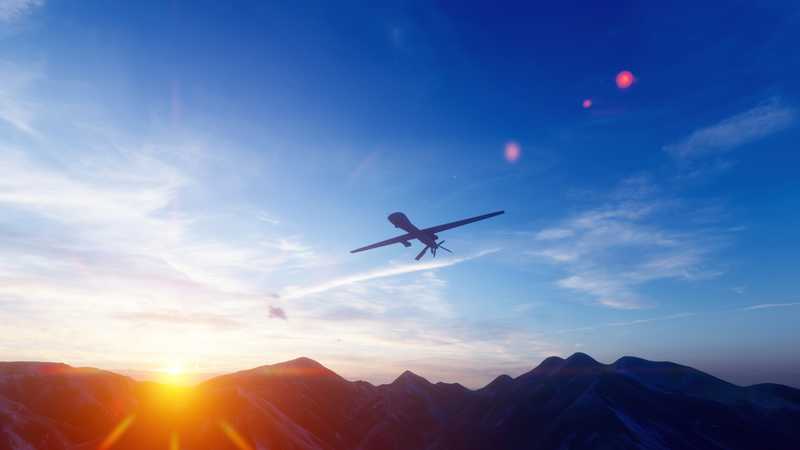Missile defenses did not stop rocket attack in Iraq

A military drone flies over a desert mountain plain at sunset.
Originally published by Asia Times
At least 10 Katyusha-type rockets slammed into the Ain al-Asad airbase located in Anbar province in Western Iraq on the morning of March 3. Since the earlier attack in January 2020 by heavier Qiam-2 advanced tactical ballistic missiles launched from Iran, the airbase has been reinforced with air defenses that proved unable to stop the rocket attack. Can the US protect its personnel in Iraq or elsewhere from rocket attacks?
The latest available information says that one US contractor was killed and one US service member wounded. Five contractors also were wounded.
Unlike the January attack, this assault originated not far from the airbase in the al-Bayader agricultural area near the town of al-Baghdadi. The rockets were launched from a hidden set of launch tubes on a standard dump truck. The truck was found burned out 8 km (5 miles) from the al-Asad airbase.
The rockets were 122 mm Arash variations made in Iran. (The rockets are named after Arash the Archer, a heroic archer in Persian mythology.) Arash rockets have an 18 kg (about 40 lbs) high explosive warhead. Typical Arash models are not guided but depend on launch angle and are fin-stabilized. However, Iran announced in 2020 it was introducing a guided version. There is no definitive information that the Arash rockets used against al-Asad were guided but there is physical evidence found at the scene of the burned-out truck that indicates the launch group had an internet connection.
It is notable that the rockets hit their mark, suggesting something more was involved than an unguided round. Very often Katyusha-type rockets miss their targets by a significant margin. This suggests that the rockets used to attack the Ain al-Asad base on March 3 may have been equipped with inertial guidance systems, GPS and internet links for control and guidance.
The launch tubes in the dump truck were cleverly hidden under the truck bed. By raising the bed, the truck became a TEL (a transporter, erector, launcher). There is a video of the burning truck in which the launch tubes under the bed are visible.
It is not clear why the truck burned. It could have caught fire when the multiple rocket launches ignited the fuel tank and triggered an explosion. Or the launch team may have set fire to it after the launch disabled the vehicle.
The US is supposed to have two air defense systems at Ain al-Asad: a Patriot missile battery and a C-RAM. There is no information that either system was activated. Even if the C-RAM and Patriot systems did respond to the Katyushas, neither is ideally configured to counter this kind of threat. C-RAM is a gun system and the operator has to detect, aim and fire the gun to hit an incoming missile. Ten rockets arriving in quick succession would most likely overwhelm a C-RAM system even if it had detected the incoming rockets in time. The Patriot system is not designed to hit small artillery-round type rockets. It would seem there is a coverage gap for US forward defenses that was exploited by the enemy.
The Arash is reported to have a speed of 1,610 mph, or Mach 2. Given the distance covered, this works out to an 11-second flight trajectory from launch to target.
Unfortunately in this attack, there was no early warning. When Ain al-Asad was attacked by Qiam-2 missiles in January 2020 there was a warning. The US knew the Iranians had accessed commercial satellites to pinpoint target locations on the base. It is also quite possible that preparation for the launch of the liquid-fueled Qiam-2 rockets was seen by spy satellites, although this has not been reported. Prior warning allowed time for personnel to enter hardened shelters and for vital equipment to be removed from the base.
Click HERE to read more.
- Trump and Ukraine: what Russia wants, what Trump could do - November 8, 2024
- North Korean troops in Kursk could backfire on Moscow, Pyongyang - November 1, 2024
- Secure enclaves: bad CHIPS Act idea wasting billions - August 12, 2024
